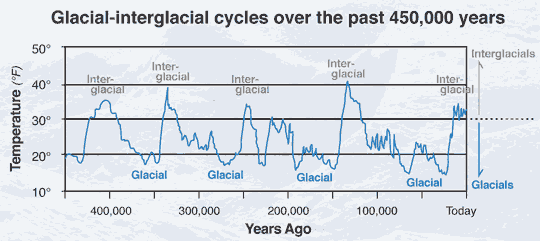Somehow I missed this interesting study.
Abstract.
Elucidating the material culture of early people in arid Australia and the nature of their environmental interactions is essential for understanding the adaptability of populations and the potential causes of megafaunal extinctions 50–40 thousand years ago (ka). Humans colonized the continent by 50 ka, but an apparent lack of cultural innovations compared to people in Europe and Africa has been deemed a barrier to early settlement in the extensive arid zone.
Here we present evidence from Warratyi rock shelter in the southern interior that shows that humans occupied arid Australia by around 49 ka, 10 thousand years (kyr) earlier than previously reported. The site preserves the only reliably dated, stratified evidence of extinct Australian megafauna including the giant marsupial Diprotodon optatum, alongside artefacts more than 46 kyr old. We also report on the earliest-known use of ochre in Australia and Southeast Asia (at or before 49–46 ka), gypsum pigment (40–33 ka), bone tools (40–38 ka), hafted tools (38–35 ka), and backed artefacts (30–24 ka), each up to 10 kyr older than any other known occurrence.
Thus, our evidence shows that people not only settled in the arid interior within a few millennia of entering the continent, but also developed key technologies much earlier than previously recorded for Australia and Southeast Asia.
https://www.nature.com/nature/journal/v539/n7628/full/nature20125.html
Nature 539, 280–283 (2016). doi: 10.1038/nature20125
——————————————————————————————————————————————
Highlight of the month: Flinders University
First Australians ate giant beasts
The first humans to reach the Australian coast quickly migrated to the hot and dry interior, where they developed tools to prey on the giant beasts that roamed the continent at the time.
The discovery of tools, pigments and other artefacts from the Warratyi rock shelter, 200 kilometres inland from the South Australian city of Adelaide, indicate that Aborigines settled the arid zone around 49,000 years ago, some 10,000 years earlier than previously thought.
The site also included fragments of a leg bone from the rhino-sized marsupial Diprotodon optatum and an eggshell from a giant flightless bird. The age of these fossils, the absence of tooth marks from predators, and their position up a path too steep for these megafauna to climb also provide the best evidence to date that people were hunting and eating these long-lost creatures.
A large Australian research team that included investigators from Flinders University reported the findings in Nature.
https://www.natureindex.com/institution-outputs/australia/flinders-university/5139072d34d6b65e6a002140?utm_content=FLU01T&utm_source=sciencealert&utm_medium=cpc_native&utm_campaign=promotion_ep&utm_source=taboola&utm_medium=native#highlight
